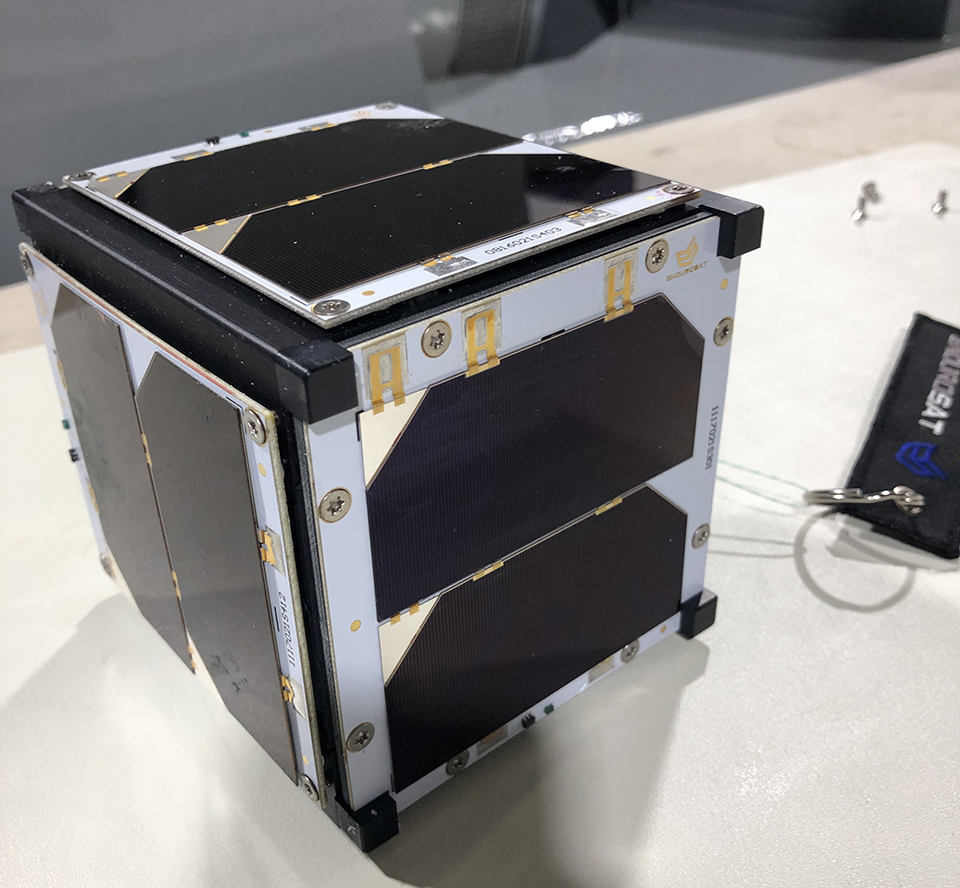SLU's Argus-2 Satellite Set for Saturday Launch to International Space Station
Maggie Rotermund
Senior Media Relations Specialist
maggie.rotermund@slu.edu
314-977-8018
Reserved for members of the media.
Students and faculty from Saint Louis University’s Parks College of Engineering, Aviation and Technology will be looking to the skies Saturday, Nov. 2, as the SLU-built Argus-2 satellite is launched to the International Space Station (ISS).
SLU’s third spacecraft, Argus-2, will be carried on board a Northrup Grumman rocket to the International Space Station at 8:59 a.m. CST Saturday. The team will watch the launch together in McDonnell Douglas Hall.

For those interested in watching the launch, NASA TV will livestream the countdown and launch beginning at 8:30 a.m. Follow along here to keep up with the latest updates for the launch (CRS-12).
“As with all rocket launches, all times are subject to change based on weather and the inevitable pre-launch glitches,” said Michael Swartwout, Ph.D., associate professor of aerospace and mechanical engineering at Parks.
Preparing for Launch
The SLU team took the spacecraft down to NanoRacks facility in Houston in August. NanoRacks is the private company that handles the spacecraft ejection system on the space station.
NanoRacks is taking SLU’s spacecraft, loading it into the ejection system with 10 others and delivering the whole stack for launch. An NG-12 cargo rocket will launch the stack Saturday from NASA’s Wallops Flight Facility in Virginia.
“The ejection system will be brought into the ISS, put in storage and, eventually be moved into the airlock, where the Canadarm2 system will grab it and pull the ejection system into position outside the ISS,” Swartwout said. “From there, individual spring-loaded doors are opened and the spacecraft inside are spring-ejected into orbit, away from the ISS.”
The release into orbit is currently slated for January 2020.
The 4-by-8-inch, 6-pound Argus-2 is going into space as part of NASA’s Educational Launch of Nanosatellites (ELaNa) program. The original Argus was lost to rocket failure in 2015.
Argus-2 first takes on some of the original Argus mission; the satellite will fly with a commercial SD memory card, and SLU’s lab will be routinely checking it for errors. A camera will be capturing pictures of the Earth, and on-board software will identify “interesting” features in those images. Researchers will then train the system in what is actually interesting, so it can learn to do it better on its own.
The second objective of Argus-2 is to take a baby-step towards SLU’s next space project, called DORRE. DORRE will be a small constellation of two or more spacecraft and two or more ground systems (telescopes). AI techniques will be used to automatically detect and sense natural events, such as auroras, thunderstorms or meteors.
Read more about SLU’s stellar space history
Saint Louis University is a Catholic, Jesuit institution that values academic excellence, life-changing research, compassionate health care, and a strong commitment to faith and service. Founded in 1818, the University fosters the intellectual and character development of more than 13,000 students on campuses in St. Louis and Madrid, Spain. Building on a legacy of now more than 200 years, Saint Louis University continues to move forward with an unwavering commitment to a higher purpose, a greater good.

















